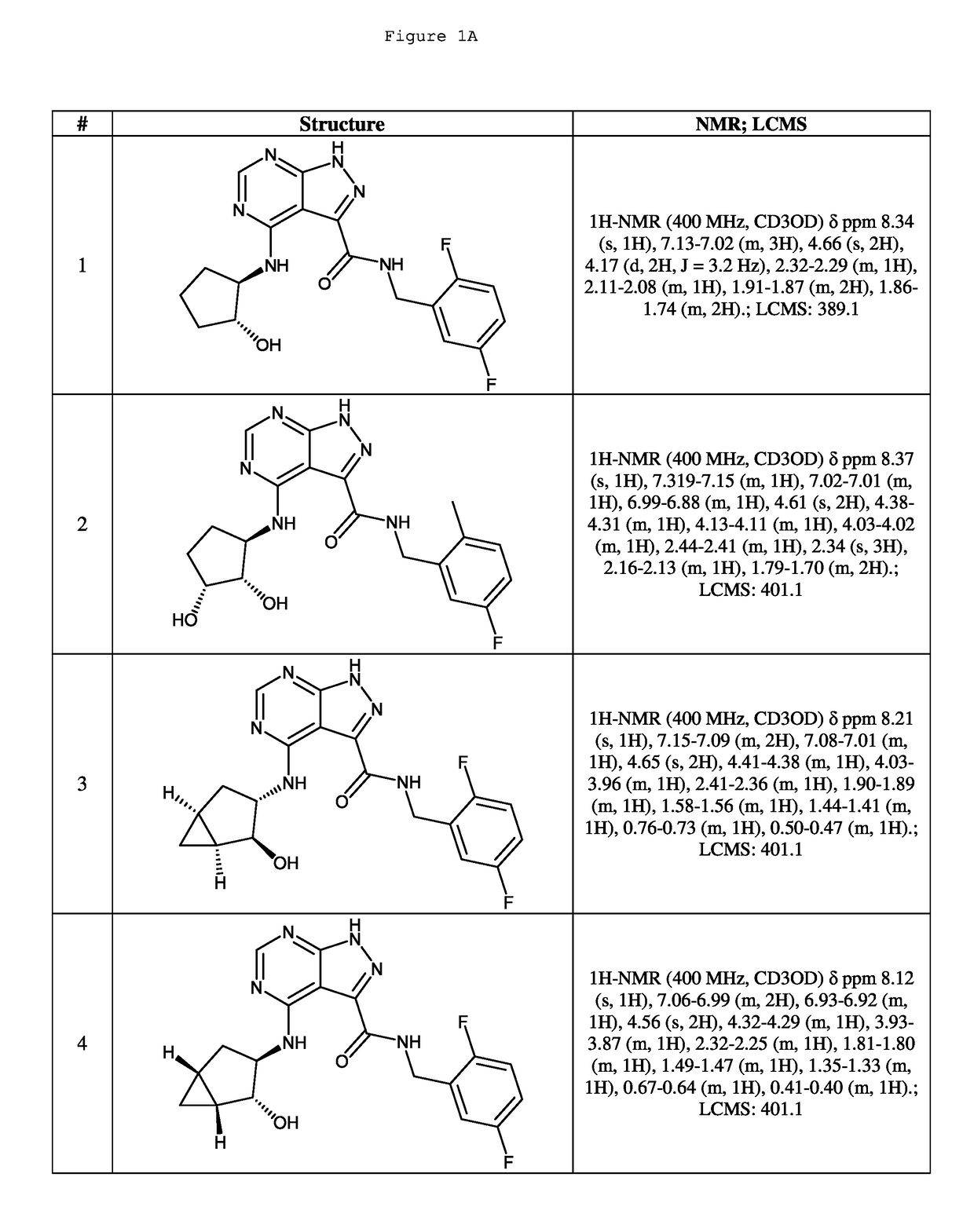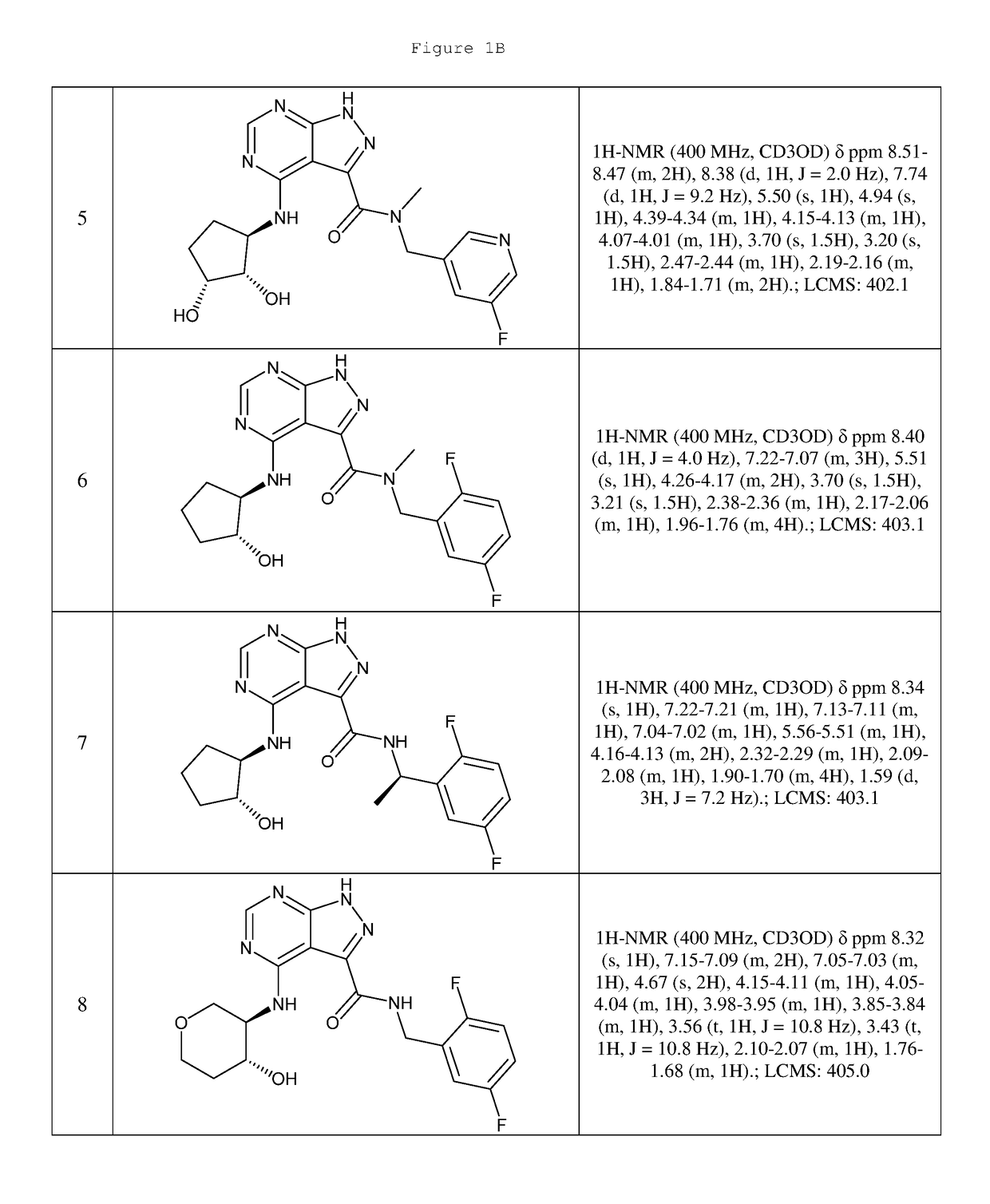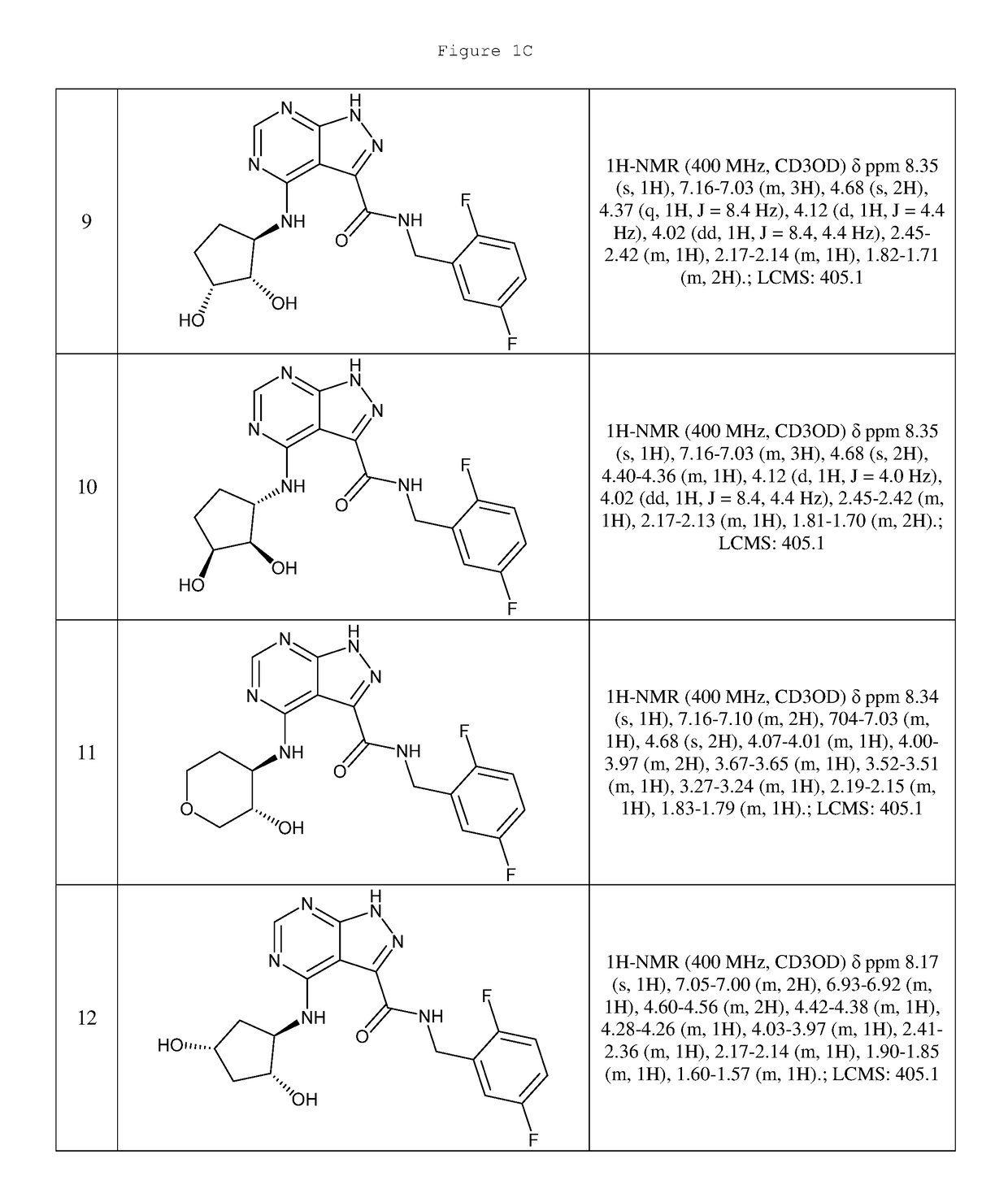Compounds and compositions useful for treating disorders related to NTRK
a technology of compound compositions and disorders, applied in the field of compound compositions useful for treating disorders related to ntrk, can solve the problems of relapse and progression of disease, and patients' treatment options are often very limited
- Summary
- Abstract
- Description
- Claims
- Application Information
AI Technical Summary
Benefits of technology
Problems solved by technology
Method used
Image
Examples
example 1
of Compound 45
[0182]
Step 1: Synthesis of 3-bromo-4-chloro-1-((2-(trimethylsilyl)ethoxy)methyl)-H-pyrazolo[3,4-d]pyrimidine
[0183]
[0184]To a solution of 3-bromo-4-chloro-1H-pyrazolo[3,4-d]pyrimidine (10.00 g, 42.84 mmol) in DMF (50.00 mL) was added NaH (2.57 g, 64.25 mmol) in portions at 0° C. After stirring for 0.5 hr, SEM-Cl (8.57 g, 51.40 mmol) was added dropwise to the reaction at 0° C. over 0.5 hr. The reaction was slowly warmed to 25° C. and stirred for 16 hrs. After TLC (PE:EtOAc=1:1, Rf=0.88) showed the reaction was complete, the reaction was slowly quenched by 50 mL of H2O. The mixture was extracted with EtOAc (50 mL*3), and the organic layer was washed with brine (20 mL*3), dried over Na2SO4, and concentrated. The residue was purified by column chromatography on silica gel (PE:EtOAc=20:1) to give 3-bromo-4-chloro-1-((2-(trimethylsilyl)ethoxy)methyl)-1H-pyrazolo[3,4-d]pyrimidine (6.20 g, yield: 39.80%) as a colorless oil. 1H-NMR (400 MHz, CDCl3) δ ppm 8.83 (s, 1H), 5.82 (s, 2...
example 2
of Compound 97 and Compound 98
[0195]
Step 1: Synthesis of (1R,2R,4R)-2-((3-bromo-1-((2-(trimethylsilyl)ethoxy)methyl)-1H-pyrazolo[3,4-d]pyrimidin-4-yl)amino)-4-(methylsulfonyl)cyclopentan-1-ol
[0196]
[0197]To a mixture of 3-bromo-4-chloro-1-((2-(trimethylsilyl)ethoxy)methyl)-1H-pyrazolo[3,4-d]pyrimidine (300.00 mg, 824.83 umol) in dioxane (10.00 mL) was added DIPEA (319.80 mg, 2.47 mmol) and (1R,2R,4R)-2-amino-4-(methylsulfonyl)cyclopentan-1-ol (195.71 mg, 907.31 umol), and the mixture was stirred at 90° C. for 32 hrs. After LCMS showed the reaction was complete, the mixture was concentrated to remove 1,4-dioxane, and the residue was dissolved in DCM (20 mL). The organic layer was washed with water (10 mL*4), dried over Na2SO4, and concentrated to give (1R,2R,4R)-2-((3-bromo-1-((2-(trimethylsilyl)ethoxy)methyl)-1H-pyrazolo[3,4-d]pyrimidin-4-yl)amino)-4-(methylsulfonyl)cyclopentan-1-ol (350.00 mg, yield: 83.78%) as a white solid. 1H-NMR (400 MHz, CDCl3) δ ppm 8.43 (s, 1H), 6.23 (br.s, 1...
example 3
of Compound 20 and Compound 21
[0206]
Step 1: (1S,2R,5S)-2-((3-bromo-1-((2-(trimethylsilyl)ethoxy)methyl)-1H-pyrazolo[3,4-d]pyrimidin-4-yl)amino)-5-fluorocyclopentan-1-ol
[0207]
[0208]To a mixture of 3-bromo-4-chloro-1-((2-(trimethylsilyl)ethoxy)methyl)-1H-pyrazolo[3,4-d]pyrimidine (600.00 mg, 1.65 mmol) and 2-amino-5-fluoro-cyclopentanol (196.58 mg, 1.65 mmol) in dioxane (15 mL) was added DIPEA (426.49 mg, 3.30 mmol). The mixture was stirred at 110° C. for 16 hrs, after which TLC (PE / EtOAc=1:1) showed the reaction was complete. The mixture was cooled to 25° C. and concentrated in reduced pressure at 50° C. To the residue was added EtOAc (50 mL), and the organic phase was washed with H2O (20 mL*3), dried over Na2SO4, filtered and concentrated in vacuum to afford (1S,2R,5S)-2-((3-bromo-1-((2-(trimethylsilyl)ethoxy)methyl)-1H-pyrazolo[3,4-d]pyrimidin-4-yl)amino)-5-fluorocyclopentan-1-ol (600.00 mg, crude). The residue was used directly in next step without further purification.
Step 2: Met...
PUM
| Property | Measurement | Unit |
|---|---|---|
| enantiomeric excess | aaaaa | aaaaa |
| enantiomeric excess | aaaaa | aaaaa |
| enantiomeric excess | aaaaa | aaaaa |
Abstract
Description
Claims
Application Information
 Login to View More
Login to View More - R&D
- Intellectual Property
- Life Sciences
- Materials
- Tech Scout
- Unparalleled Data Quality
- Higher Quality Content
- 60% Fewer Hallucinations
Browse by: Latest US Patents, China's latest patents, Technical Efficacy Thesaurus, Application Domain, Technology Topic, Popular Technical Reports.
© 2025 PatSnap. All rights reserved.Legal|Privacy policy|Modern Slavery Act Transparency Statement|Sitemap|About US| Contact US: help@patsnap.com



